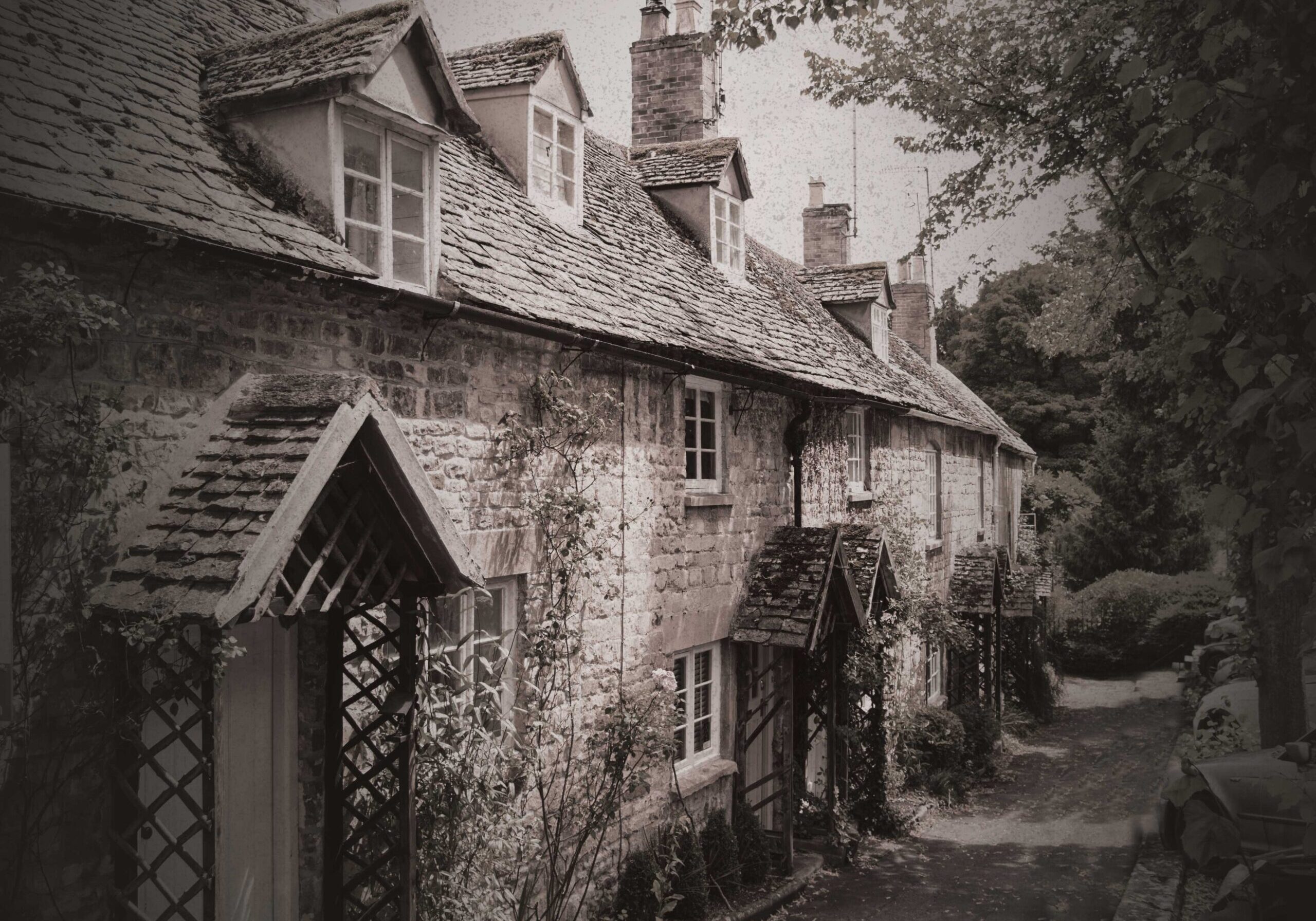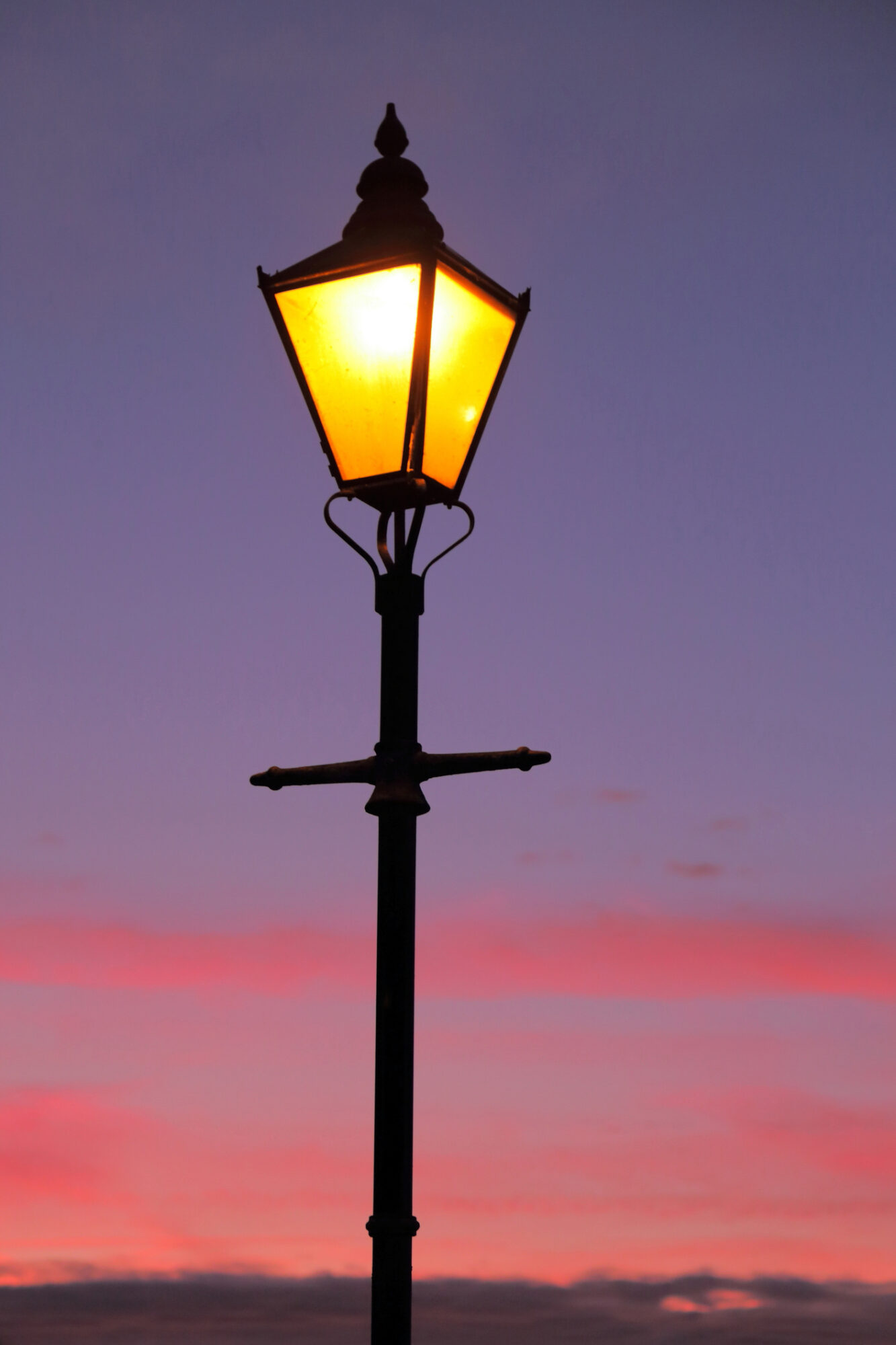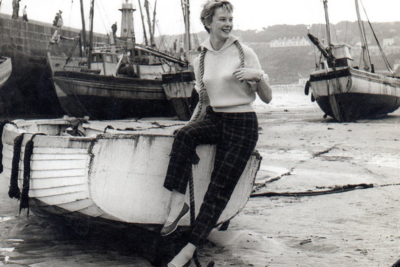
Not Related
by Marianna Michell
Marianna Michell shares her memories from growing up on the Yorkshire/Lancashire border.
When you are too young to spell, you collect words by ear. Our neighbour to the right was called Jonet Slack. He kept hens. His back garden spread across the far end of ours, so our fence backed onto hen-hut-view. I was once taken up there to have a look: out of our back yard across the slutchy street and up their garden to walk with the hens.
Being a terrace of seven houses, we were all linked in various ways. Our yard’s party wall was very useful in one respect. We put out a bright red plastic cullender with a note in saying how many eggs we wanted and how many cracked eggs as well, with the right money. 2/6d. Cracked ones were cheaper. When he had done our order, we’d hear a knocking on the living-room wall, so we’d go out and collect the eggs. When we ate the eggs, I would sometimes ask how we knew it was only yolk, and there wouldn’t be baby chickens inside. The answer was always: “because t’cock hasn’t been in wit th’en”. Deep frustration on my part: There’s the hen – and there is the cock. What has it got to do wit t’chickens and eggs?!
Jonet Slack turned out to have a surname which was not Slack and was the same as my granny’s, but mum would insist ‘we aren’t related’. But if it’s the same and we’re in the same village, we could be related further back. But most people aren’t so interested in what has been. And life for cotton-workers was honourable but difficult. No HP for my mum and dad. Straight cash and no borrowing except your mortgage of a few hundred pounds. They just worked and held things together. The whole district, for ages past, was inter-related but it meant nothing.
I grew old enough to recognise that there may be a place called Slack. John of the Slack. So he was not called Jonet. My friend was called Janet. He was not Jonet, and I had worked it out. He was John. Conversations overheard included ‘Slack Farm’. He was a son of that farm. In my long forays around the countryside on my scooter, I found Slack Farm. They must have had problems with moles because every so often I’d spot a wooden sign stuck in the ground by the roadside. It read,
MOLE
CHAP
CALL
Nice and square, that. Three words of equal length. Simple message: We work with muck around ‘ere, like our back street where we played the live-long day, topped up every so often by another lorry-load of sludge, but we thought the word was slutch, and slutch was ok to play in.
“We were a street which stayed put. John o’t’ Slack may have lived there longer than anyone else.”
Now, I may be giving the impression we were one of many streets. No, our front street had the honour of being the last before a long valley. It was also ‘unadopted’, offering mountainous terrain down the front street, for the occasional car or van. Our row was surrounded by fields and hills as far as Pendle Hill to the front and the Yorkshire border somewhere to the back. Farmers drove down the front street and into the valley, and the gate had to be kept shut. When it wasn’t, the result was beeasts in t’ back-yard. Cows would mill and moo gloomily around our kitchen window. Sometimes it was my cousin’s pigs on the loose, kept perhaps in some unofficial place. Lots of unofficial events sprang from that family.

The valley is really called Walverden from the name of the brook. But it was known as t’pigole. Pig Hole Farm was the first building you came to. At one point it held a family of eight children whom I knew, all names beginning with J. After they left, it fell into disrepair and the afore-mentioned person who had pigs took to removing lead pipe-structures which ran around and from the roof. Later, this near ruin was turned into a family home by folks who shut off the stile and with it the right of way. But there was a way around, past where the pig-sties were falling to further ruin, so I would walk that way feeling dis-gruntled, perhaps like the pigs of olden times.
Visitors to our front street, which was after all on the edge of nowhere, included the rag and bone man. At first, you heard his shout which had corrupted over his life-span from “rag and BONE….” to “hey HOOO….” Quick, rag an’bone man’s ‘ere.
The horse and cart lumbers down the lumpy street.
Did anyone ever have bone to put in it, and if so – why?!
The other occasional visitor was the gas-chap. Near our front steps was one of two gas lamps for the street. Even after they became electrified, in common speech they were still gas- lamps. A tall lad was referred to as “a gas lamp”. The reason the posts had that horizontal protrusion at the top was so that the man could rest his ladder to climb up and change the gas mantle. And I recall one dusk, there he was.
“Our front street had the honour of being the last before a long valley”
We were a street which stayed put. John o’t’ Slack and his wife and son may have lived there longer than anyone else, but the other six houses also rarely changed ownership or tenancy. No. 27 saw the shortest stay – the final months of Auntie Annie’s life. We would call it hypothermia now. We knew her because mum would take me to Annie’s previous old house in the valley, right by the river and with a path to the heavenly blue-bell woods. When her husband was alive, there were hens scampering in the under-belly of the house. He had died suddenly. They had the same surname as our cousins who had also lived at no. 27, but again mum said, “she isn’t related”. So, Auntie Annie was brought nearer to civilisation, but couldn’t get used to the notion of heating no. 27. Her hands were blue, and the house was candle-lit because she didn’t use the electric lights. Too long spent in a house in a valley alone by the river with only gaslight, a deer skull and antlers on the wall, and a slop-stone sink to serve as kitchen and washing area.
Later, the families in my district revealed their links through ancestry research, from which many relationships of old fell into place. For most people, it was, and still is of little consequence to look outwards from that valley, nor backwards to where we had come from. I wandered further than most. As a child I had a recurring dream about being in a dark old house like Annie’s which sloped dangerously towards a river. I was scared it might collapse. I understood later that this was my inner house: it was the mood of my upbringing, my childhood ‘house’ which needed slowly to collapse into a wider and more flowing river.
To share your memories email memories@northernlifemedia.co.uk or go to northernlifemagazine.co.uk/contribute
NorthernLife Sep/Oct/Nov 23





